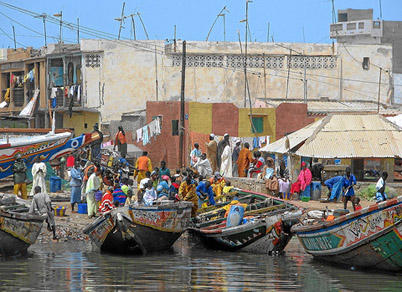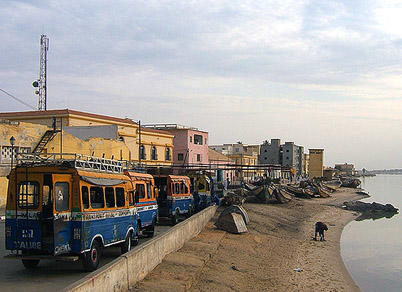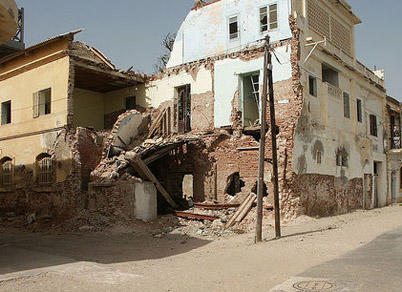Saint-Louis Island
2008 World Monuments Watch
Founded in the seventeenth century, the small island city of Saint-Louis served as the capital of Senegal from 1872 to 1957, and played an important cultural and economic role in French West Africa during that period. Only 300 meters wide from east to west and 2.5 kilometers long from north to south, this island at the mouth of the Senegal River is characterized by its system of quays, its urban plan, and its colonial architecture, which chronicle the history of the island's occupation.
The emergence of Dakar as the capital of Senegal in the mid-twentieth century resulted in Saint-Louis' decline, which continued until the 1990s. The passage of time combined with a lack of maintenance—due in large part to a lack of financial resources—has put an estimated 30 percent of the island's buildings at risk of demolition. Those buildings that still stand have been subject to problematic restorations and unsympathetic development. The lack of public understanding of the cultural and historical value of the island and inadequate planning have also contributed to the threats to historic Saint-Louis. Despite these issues, the island was added to UNESCO's World Heritage List in 2000, and the city organized an international conference on the conservation of the site in December 2006, during which a comprehensive management plan was drafted.
Saint-Louis Island was included on the 2008 World Monuments Watch to encourage a successful implementation of the management plan to ensure the long-term sustainable conservation of this important historic city.



